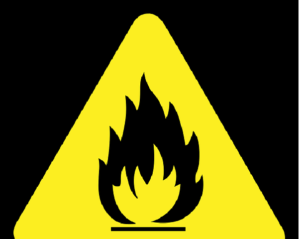
Read on to learn about the different parts of a firestop system and their functions.
Any building manager or owner understands how important it is to have a good firestop system. It protects a building and anyone inside of it from spreading fire and smoke. There are two ways the term “firestop” is defined. It’s either a fire protection system which seals the openings and joints in the walls and floors of a building, or it’s the individual pieces of the system. As their name may suggest, firestops help stop fires from spreading in buildings. Read on to learn about the different parts of a firestop system and their functions.
Slab Edge
The slab edge of the property is the primary place where fire and smoke go in-between the different rooms of the building. A slab edge firestop is considered to be an extension of the floor slab’s fire resistance.
Curtain Wall
A curtain wall is a type of wall that is surrounded by an aluminum framing. This part of the firestop has in-fills that can be made from a few different materials. Common materials for the in-fills include glass, small stone, and metal panels.
Top of Wall
At the peak of any wall or floor assembly, there is a tiny gap that is formed. This gap lets fire and smoke go between the different rooms of a building, as well as the floors. Using top of wall firestopping, these gaps get filled in using a fireproof compound. This compound stops any fire or smoke from spreading throughout the floors and rooms of your building.
Joint
Joint firestopping does precisely what its name would suggest. It protects the joint between the wall and floor assemblies.
Pipe Penetration
Whenever there is any HVAC, plumbing, or mechanical work that has to be done in a building, there are going to be openings, and these opening can leave the structure in a vulnerable position. Using pipe penetration firestop, you can fill in the openings that are made due to the work that is done in fire-rated walls and floors.
Concrete Visions Will Get The Job Done Right
Concrete Visions has been working with clients for over 25 years. Our G&M Services installers are certified with the industry’s major firestop product manufacturers. As part of our firestop service, we can assess abnormal field conditions and, with the manufacturer’s technical support assistance, provide engineering judgments in a timely fashion to comply with contract specifications. Our Field Mechanics undergo ongoing training, including mandatory monthly safety meetings, weekly Toolbox Talks where safety and equipment information is shred, and trainings on safe work standards and safety best practices.Visit our website to see how we can be of service to you, and follow us on Facebook, Twitter, and Linkedin.
